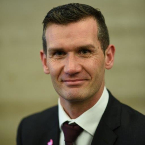
Discussion
The Royal Flying Doctor Service (RFDS) Western Operations transfers over 9,000 patients per year with approximately 50% requiring the expert care of a dedicated RFDS Critical Care Retrieval Team. The team comprises an RFDS Retrieval Doctor and an RFDS Flight Nurse only, and of course the pilot.
At 30,000 ft there is no access to any additional personnel or equipment. No pathology, no x-ray, no CT scanner and no theatre to call upon for help.
Combine this isolation with the confined space of an aircraft cabin and you have an “ICU in a telephone box”.
Add in the aviation environment and the associated gas laws related to the temperature, pressure, volume and mass of a gas and you have a “Flying ICU in a telephone box”.
Conclusion
To successfully transport a Critical Care patient safely at 30,000 ft a significant amount of patient preparation and stabilisation is required prior to commencing the transport.
Combine this with the broad experience and excellent clinical skills of the RFDS Critical Care Retrieval Team and this is why the RFDS continue to provide the finest care to the furthest corners of Australia and even beyond.
References
1. Holleran RS. Air & Surface Patient Transport: Principles and Practices. 3rd Edition. Mosby 2003.
2. Holleran RS. Emergency and Flight Nursing Review. 2nd Edition. Mosby 1996.
3. Langford SA. Preparation of Patients for Transport. Royal Flying Doctor Service of Australia. Monograph Series Number Two. 2009.
4. Holleran RS. Flight Nursing: Principles and Practices. 2nd Edition. Mosby 1996.







 Share on LinkedIn
Share on LinkedIn




